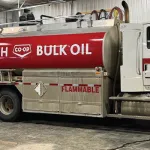
Polar blast envelops Midwest, strains aging infrastructure
CHICAGO — A blast of polar air enveloped much of the Midwest on Wednesday, cracking train rails, breaking water pipes and straining electrical systems with some of the lowest temperatures in a generation.
The deep freeze closed schools and businesses and cancelled flights in the nation’s third-largest city, which was as cold as the Arctic. Heavily dressed repair crews hustled to keep utilities from failing.
Chicago dropped to a low of around minus 23 (minus 30 Celsius), slightly above the city’s lowest-ever reading of minus 27 (minus 32 Celsius) from January 1985. Milwaukee had similar conditions. Minneapolis recorded minus 27 (minus 32 Celsius). Sioux Falls, South Dakota, saw minus 25 (minus 31 Celsius).


